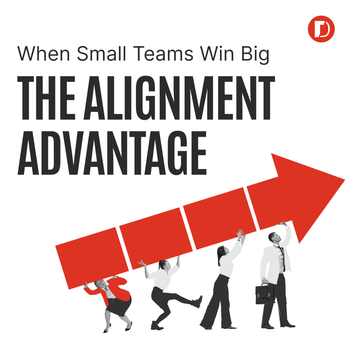Pandora Advertising 101: Is it Right for You?
by Ana Gotter • June 2, 2020
When digital music purchases first rolled out, it was groundbreaking. You could buy just a single song instead of an album, and you could do it right from the comfort of your own home on the computer. No waiting, no trips to the store.
Legal music streaming took this novelty to the next level. Pandora was one of the original music streaming platforms out there, allowing users to create channels based on a genre, specific songs, or specific artists. They could actually hear these artists and those considered categorically similar for free.
Music streaming is more popular than ever before, with some users relying heavily on streaming as their primary method of listening to music, podcasts, and more. Pandora is still a leading force in the music-streaming industry, with a large and enthusiastic audience.
This is great for consumers, but it’s also great news for marketers and businesses looking to connect with their audiences in a new way, too. Advertising on the platform is a great opportunity for small and large brands alike to reach listeners with strong, branded messages that can help them build awareness and drive purchases.
In this post, we’re going to discuss everything you need to know about Pandora advertising so you can determine if it’s a platform that’s right for you.
Different Types of Pandora Ads
Unlike other audio-streaming platforms, Pandora gets creative and diverse with the ad types that they’re offering advertisers. There are three key types that most brands would benefit from:
Audio Ads
Pandora advertising allows brands to create short, 15-second or 30-second long audio spots and then pay to place them in front of relevant audiences
These are their “Audio Everywhere” ads, and users can’t skip or scroll past them; they’d need to actively mute the sound every time an ad plays. With these ads, you can also add a visual component so that an image will appear while the user is looking at their screen.
Audio Everywhere ads are going to be in the midrange for pricing here; purely visual ads are more cost effective and video ads are more expensive.
You can also use Dynamic Audio Ads, which allow you to “hyper-personalize” your ads by leveraging user data in real time. Pandora’s programming will look at cues like location, time-of-day, and even the weather to get the right message to the right user right on time. It’s a little like dayparting, but your ads keep running 24/7.
Audio Ads
Pandora advertising allows brands to create short, 15-second or 30-second long audio spots and then pay to place them in front of relevant audiences
These are their “Audio Everywhere” ads, and users can’t skip or scroll past them; they’d need to actively mute the sound every time an ad plays. With these ads, you can also add a visual component so that an image will appear while the user is looking at their screen.
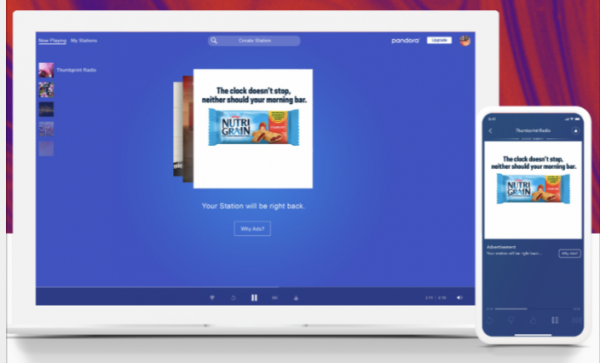
Audio Everywhere ads are going to be in the midrange for pricing here; purely visual ads are more cost effective and video ads are more expensive.
You can also use Dynamic Audio Ads, which allow you to “hyper-personalize” your ads by leveraging user data in real time. Pandora’s programming will look at cues like location, time-of-day, and even the weather to get the right message to the right user right on time. It’s a little like dayparting, but your ads keep running 24/7.
Visual Ads
Visual Ads are exactly what they sound like: You get to show some sort of image-based message to target audiences, which they can click on to head to your site. These can include still and animated images, depending on the format. These will play when a user is listening on a qualifying device.
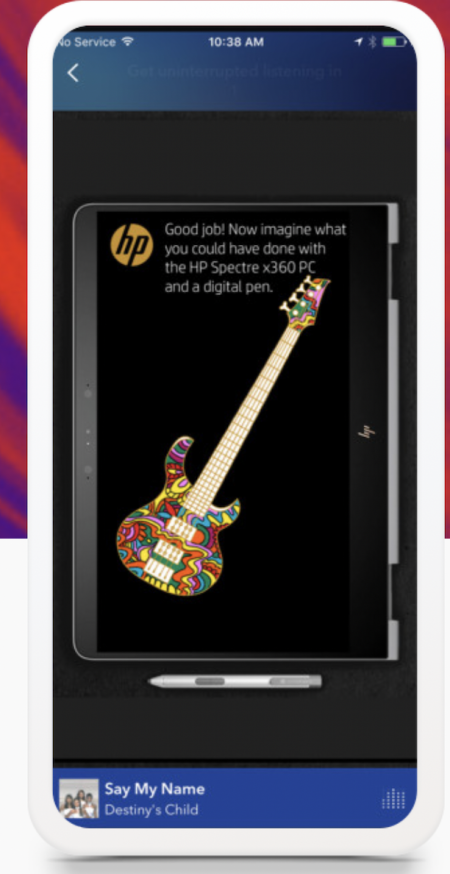
There are three key types of visual ads you can choose from:
- Display Ads. Opt for traditional web-style ads or banner ads, which will appear on the site or app while users are listening. Pandora minimizes the risk that users won’t even see the ad if they’re only listening to music while they do something else by ensuring that (like video) they only appear when the user is engaging with Pandora directly.
- Mobile Ads. As you may have guessed, these ads are served exclusively to mobile devices. You can create non-responsive ads, which users simply tap to head to your landing page, or responsive ads that have multiple touch points that can send users to different landing pages that are most relevant to them.
- Web Skins. This seamless option is best for brand awareness, swapping out the listener’s current album art box with your visual ad content.
Video Ads
Video Ads allow you to pay per thousand views to show your short video ad to high-engaging users. These videos allow you to add on a display ad (which we’ll look at in a minute) that takes users right to your designated landing page, increasing their effectiveness.
Videos can either be non-skippable and 15 seconds long, or 30 seconds but skippable after the first 15.
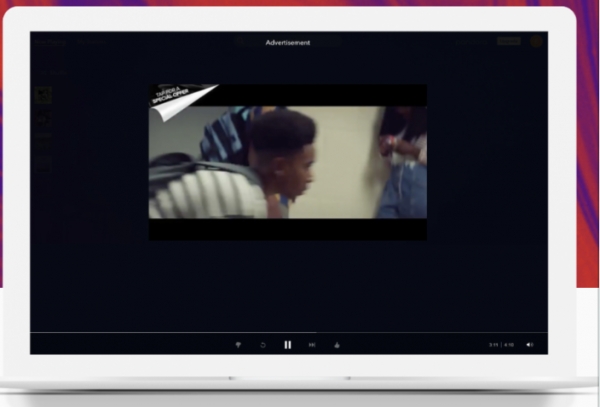
Pandora specifically works to show video ads to users who are actively engaged in using the app; they look for cues like when a user is skipping sons or scrolling through/creating different radio stations. If a user is looking at their phone, that’s when they see an ad.
There are multiple types of video ads to consider:
- Video Everywhere. These allow you to showcase your videos on in-network sites and apps all across the internet, essentially showing as a banner for relevant users.
- Video Plus. When mobile users engage with your video ad, users can skip more songs, replay tracks, or even access Pandora premium. Unlike most other ad options, this is an exception; you’re paying for cost-per-completed-view, which can help you get the most out of your ad spend.
- Sponsored Listening. This uses reward-based advertising. Listeners get one hour of uninterrupted music if they engage with a brand’s video for 15 seconds. You aren’t sharing the screen with anything else.
- Muted Video Ads. You can mute your video ads so that they can listen to their music in the background. This typically isn’t advised, however, because while costs are lower, engagement is, too.
- Platform-specific Video. These ads will be full-screen and immersive for desktop, mobile, or tablet, so you’ll need to make sure you have the right video specs. It demands user attention.
Additional Ad Types
Most businesses are going to benefit most from the three ad types above, but there are a few additional formats that some may want to take advantage of. These include:
- Experiential events. Connect fans with their favorite audiences through live concert events. Pandora identifies artists trending amongst certain listeners, and invites those listeners to attend relevant events. You can help sponsor event, or have one totally in your brand’s name.
- Content ads. Have your podcast sponsored through Pandora, sponsor a station that’s customized to your brand, or have your ad appear during podcasts.
- Studio resonate. You can work with Pandora’s partnership with Studio Resonate for them to create audio ads for you. These costs, however, are high, and you still need to pay for ad spend.
Why Should I Consider Advertising On Pandora?
While it won’t be right for every business, there are multiple reasons why brands should consider investing in Pandora advertising.
The first is that it allows you to effectively reach diverse audiences. There are hundreds of thousands of users in each individual age group, but one interesting thing about Pandora is that it skews a little older than other streaming platforms, including Spotify.
Users who are 25-34 make up 28% of all users, followed by those 55+ and 22% and those who are 34-44 at 21%. Those who are 18-24 only make up 11% of the audience.
While plenty of brands rush to appeal to the youngest adult ages, this demographic line up can actually work to your advantage if your audience includes anyone 25 and up. It doesn’t hurt that these users typically have higher disposable income, too.
It’s also worth pointing out that Pandora has over 63.1 million users. That seems like small potatoes compared to some social media sites’ multi-billion user count, but you’re getting a chance here to create ads that users may not be as likely to just scroll past.
How Much Does Pandora Advertising Cost?
Pandora advertising costs are going to vary depending on the type of ad that you choose to run, but all will be priced on cost per milli, or the cost per thousand views.
Visual ads typically cost between $5-7 per thousand views, with display ads being on the lowest end of that cost range.
Audio ads average around $8-12 per thousand views, typically with mobile listeners costing slightly less to reach.
Video ads are easily the most expensive, costing an average of $15-25 per thousand views. That being said, video ads are carefully timed to reach high-engaging audiences and may actually be the most high-engaging ad form as a result.
In addition to your campaign costs, you’re going to want to look at minimum required ad spend numbers; this is the minimum amount that you need to invest into the ad platform to have your ads run. Pandora’s standard campaign packages start at $1500 per month, but there is no official minimum ad spend.
How Does Pandora Advertising Work?
It’s important to note that Pandora does not truly have self-serve ad platforms like other tools out there, including Spotify. You need to get in touch with Pandora directly.
Pandora is highly involved in the process, it takes about twelve days of lead time to for the design, review, revisions, production, and trafficking of ads to occur.
Start by downloading at templates here, which you can use to create your own visuals for mobile, desktop, and tablet. You’ll want to do this for each device you want to run ad campaigns on. Each one offers specifics about best practices and recommendations.
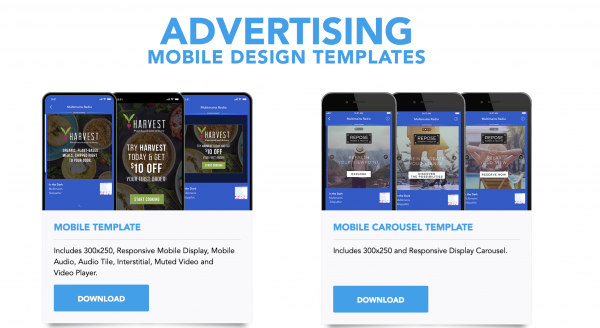
You can also fill out intake forms if you’re using Pandora to help create your audio ads. This will help them shape the initial design of the campaigns at hand. You’ll be asked to specify your target audience, your brand values, what you want out of your campaign, and more. This is all crucial information, so be detailed when submitting these.
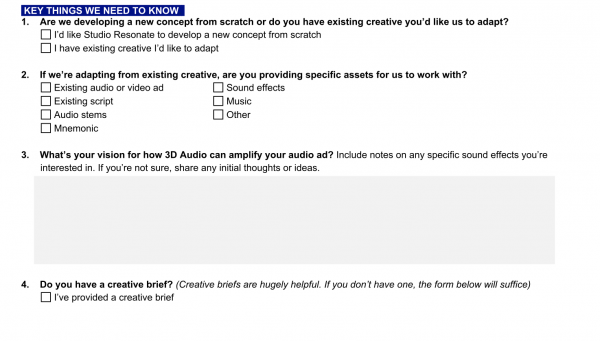
Conclusion
Pandora Advertising may not be right for everyone, but it is a platform that more businesses should consider using. It may help increase brand awareness and recall, along with purchase intent, if you create strong, audience-centric ads. There are so many ad formats that you can choose from, and it’s clear that their hyper-targeted and strong personalization options can amount to wins for brands across multiple industries.
If you aren’t sure which ad platforms can benefit you most, getting in touch with a qualified, data-driven advertising agency can help. You can get in touch with us here and we can talk about the best options for your business.
What do you think? Have you ever used Pandora advertising or other audio ads? Would you try it if you haven’t yet? Share your thoughts and questions in the comments below!


